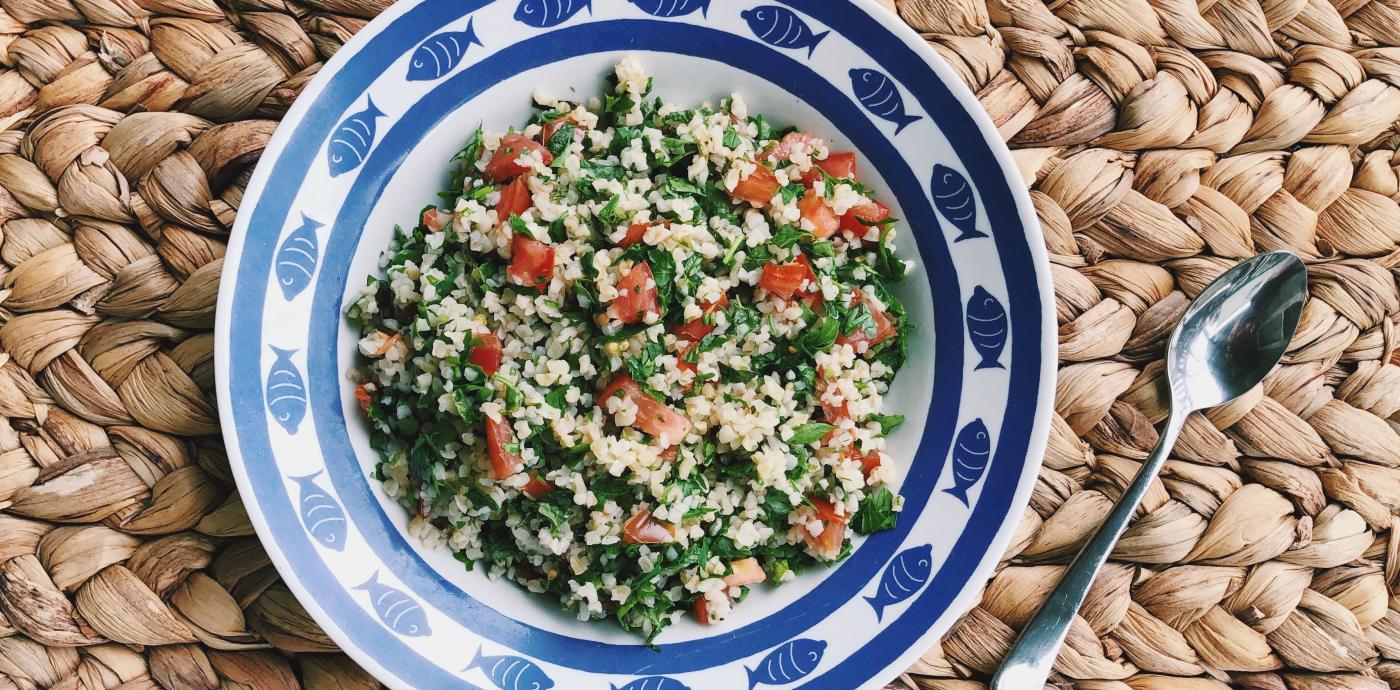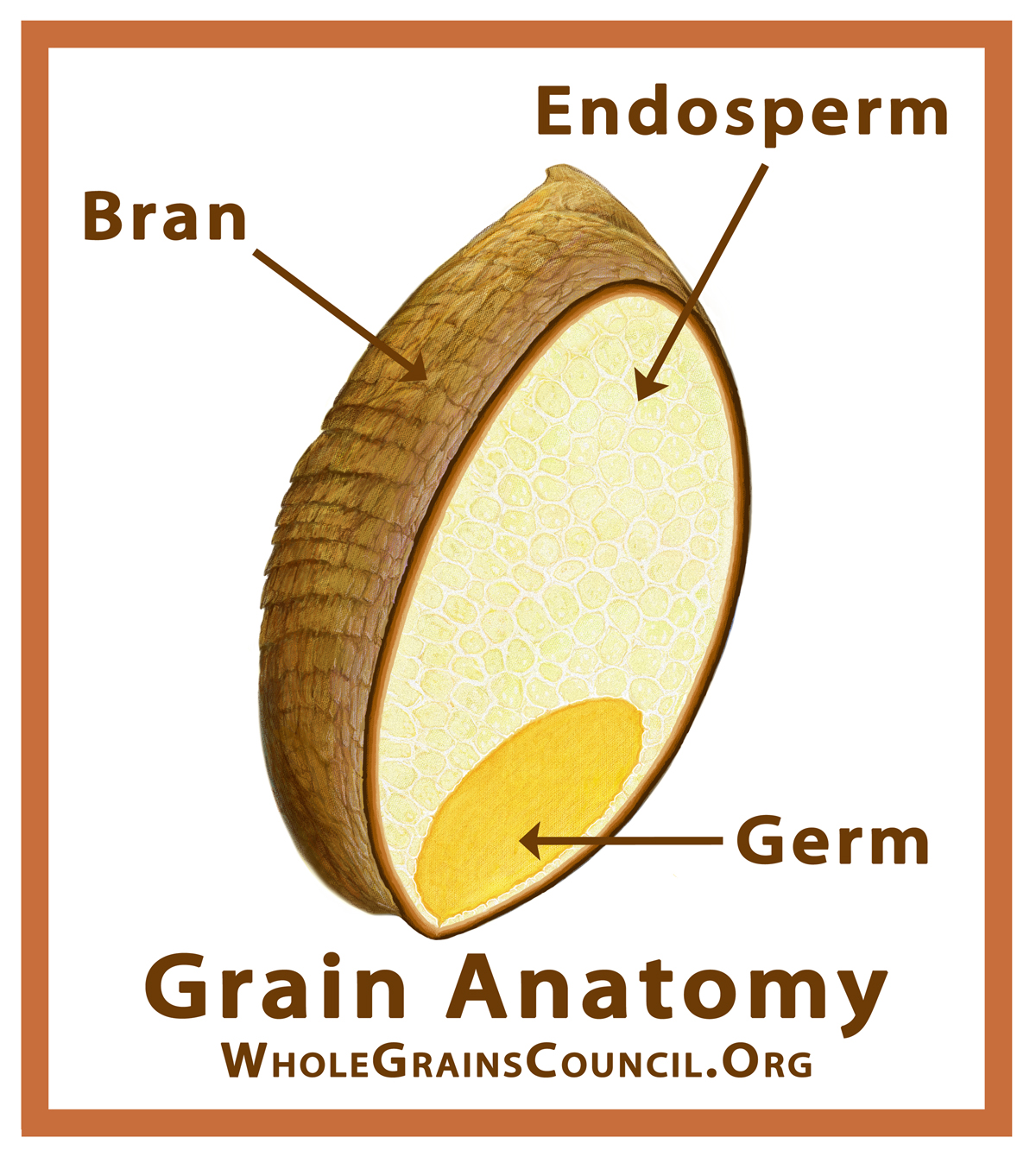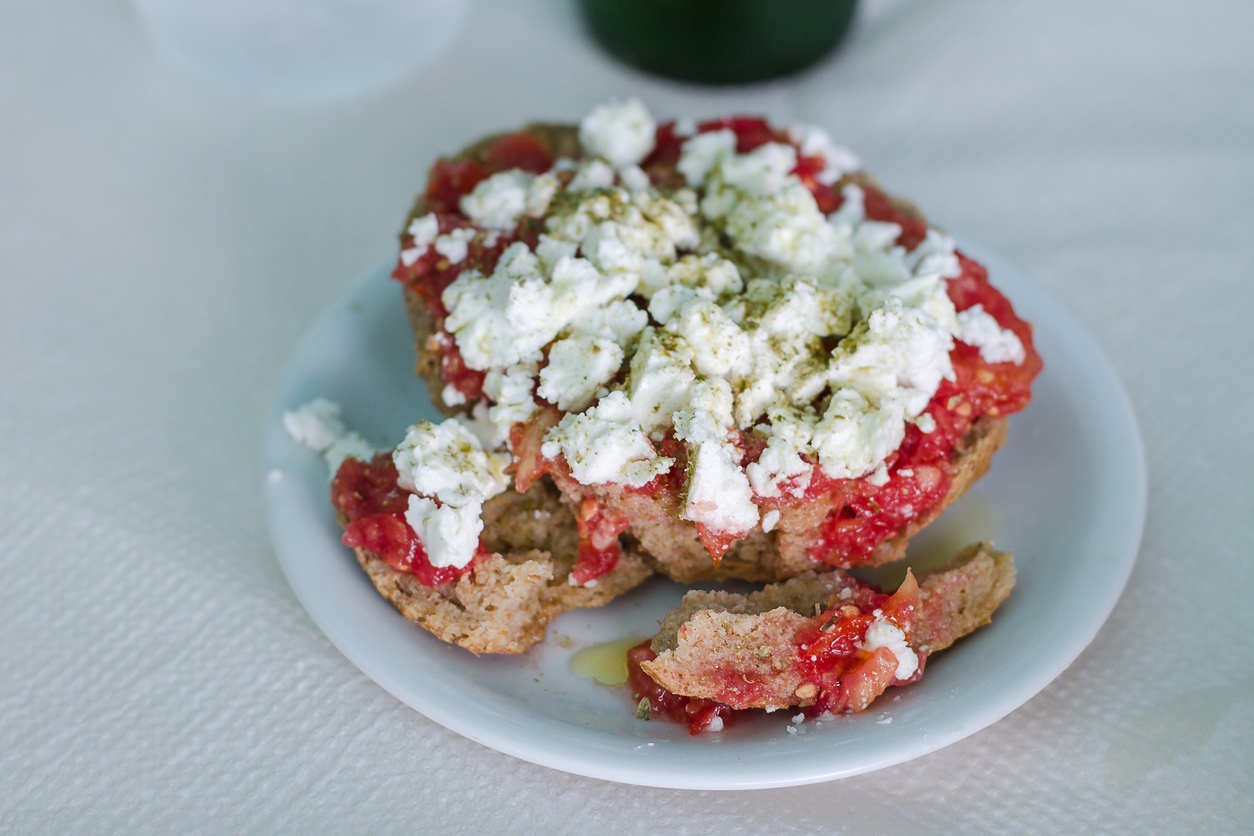Up until the widespread adoption of industrial milling in the late 1800’s, nearly all of the grains eaten in the Mediterranean (and elsewhere around the world) were enjoyed in their whole grain form. Despite the growing availability of refined grains in the decades (and centuries) that followed, whole grain dishes continue to be cherished throughout the Mediterranean.
What is a whole grain? A whole grain (kernel) is comprised of three parts:
1) The outer bran: The bran is the multi-layered outer skin of the edible kernel. It contains important antioxidants, B vitamins, and fiber.
2) The middle endosperm: The endosperm is the germ’s food supply, which provides essential energy to the young plant so it can send roots down for water and nutrients, and send sprouts up for sunlight’s photosynthesizing power. The endosperm is by far the largest portion of the kernel. It contains starchy carbohydrates, proteins, and small amounts of vitamins and minerals.
3) The inner germ: The germ is the embryo which has the potential to sprout into a new plant. It contains many B vitamins, some protein, minerals, and healthy fats.
Most of the grain kernel’s nutrients-and flavor-are in the bran and germ, which are routinely stripped out to make white flour. While white pasta or white bread sometimes make appearances in Mediterranean cuisine, the Mediterranean diet actually has a rich history of celebrating whole grains, including many lesser-known foods that are considered “ancient grains” today.
According to Oldways Whole Grains Council culinary advisor Maria Speck, author of several books on ancient grains, barley was probably the most important grain of ancient civilizations. Barley was first cultivated approximately 10,000 years ago in the Fertile Crescent, a region that spans present-day Israel, northern Syria, southern Turkey, eastern Iraq, and western Iran. With its chewy texture and nutty flavor, barley lends itself well to salads, soups and stews, porridges, breads, and fermented beverages.
Ancient wheat varieties include einkorn, emmer, and spelt. These varieties are celebrated for their sweet flavors and robust nutrition profiles.
Einkorn wheat, also referred to as farro piccolo, is the smallest of the ancient wheats. It is thought to be the oldest wheat variety, dating back to around 10,000 B.C. It is unhybridized, meaning that is has not been crossed with other varieties of wheat. Emmer wheat, also referred to as farro medio, dates back to around 8,000 B.C. Emmer is the most common wheat variety grown in Italy and is what you’ll commonly find on grocery store shelves when shopping for farro.
Spelt, also referred to as farro grande, dates back to around 6,000 B.C. It’s probably the most well-known of the ancient wheats and most readily available in mainstream grocery stores today. Modern wheat is a hybrid descendant of three grains, adapted for its ability to grow faster on less land.
Khorasan (commercially known as Kamut®) is another ancient wheat. It’s still grown in parts of Egypt and Turkey. The Kamut® brand of Khorasan wheat originated in 1949, when a U.S. airman stationed in Portugal received an unusual grain from a man who “claimed” to have taken it from an Egyptian tomb. Fast forward to 1990, the Kamut® trademark was registered with a guarantee, under which the original grain would remain unmodified and organically grown. Today, you’ll find Kamut® breads, pasta, pizza, crackers, cereals, etc.
Freekeh (free-kah) is a type of wheat that is harvested when young and green and then roasted over fire. The straw and chaff are burned and rubbed off, which gives freekeh its signature subtle smoky flavor. Rumor has it that freekeh was discovered when an ancient village in the Eastern Mediterranean hurriedly picked young wheat before an attack on their city. Fire from the attack burnt the young wheat, but the people found that not only was this roasted young wheat fit to eat, it could be quite delicious. Freekeh is traditionally used in soups, stews, porridges, and pilafs.
Bulgur is made from cracked wheat berries that are separated into small pieces and then par-cooked. It’s widely used in Greek, Syrian, and Iraqi cuisine and constitutes the main ingredient in the traditional Middle Eastern salad known as tabbouleh.
Corn, mostly in the form of polenta, is a whole grain that is a staple throughout northern Italy. Traditionally, polenta is prepared as a thick, creamy hot porridge; when chilled, the porridge can be sliced and then fried, grilled, or baked.
To be sure that you’re getting a whole grain, look for the word “whole” on the ingredient list (“whole wheat flour” instead of “wheat flour,” for instance), or look for the Whole Grain Stamp on packages. Seek out whole grains as a means of embracing and preserving old ways of healthy, enjoyable eating. From smoky freekeh to sweet polenta, there is a whole grain to suit any flavor!
Want biweekly Med Diet information and recipes in your Inbox? Sign up for our Fresh Fridays newsletter by clicking the Subscribe button at the bottom of this page!
Join the Make Every Day Mediterranean Club Facebook group for additional information and support.









